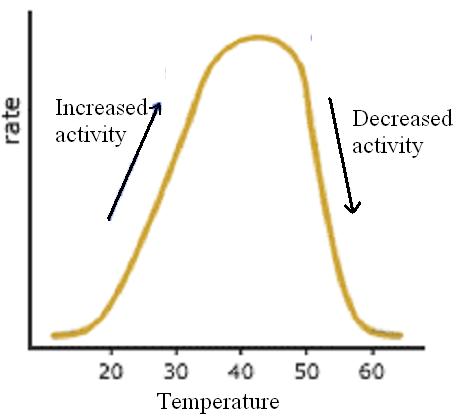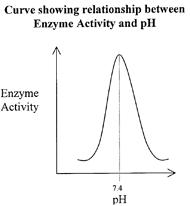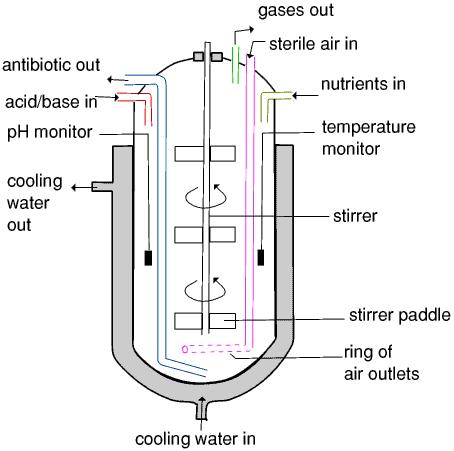Enzymes
Enzymes are proteins that function as biological catalyst. They speed up reactions within the cell. Enzymes are specific i.e. they can catalyse only one reaction.Temperature and pH affect the speed or rate of action of enzymes and they are denatured or destroyed at high temperatures and changes in pH.
The active site of the enzyme has a shape that is matching to the substrate. The substrate locks into the active site of the enzyme forming an enzyme-substrate complex. The substrate undergoes a chemical change and a product is formed and released. The free active site is ready to react with another substrate.This is sometimes called the lock and key theory of enzymes.
Enzymes are proteins so are composed of chains of amino acids folded into a distinct 3D shape. An enzyme is denatured when this shape has been altered, perhaps by heat, and as a result the substrate cannot 'lock' into the active site

Factors Affecting Enzyme Action
Enzyme action takes place when a collision or meeting occurs between an enzyme and its substrate. Collisions happen because the substrate, and often the enzyme also, are moving rapidly and randomly in a liquid medium.
At low temperatures enzyme action is low because the movement of molecules is slow. Increasing the temperature speeds up the movement of molecules raising the collision frequency and so enzyme action is greater. At 40°C there is the maximum collision frequency between enzymes and substrates; enzyme action decreases above 40°C because the enzymes are denaturing; when all the enzymes are denatured enzyme action ceases. Enzymes therefore have an optimum or best temperature of 37oC in animals and 20oC in plants.
 |  |
Within a narrow range of pH, enzyme action is high because all the enzymes are in their optimum state; increased acidity or alkalinity decreases the ability of the substrates to bind to the active site and so enzyme action decreases; a major pH change denatures the enzymes so enzyme action stops. Each enzyme may have a different optimum pH depending on the conditions of its site of action. eg protease enzyme in the stomach has an optimum pH of 2.
Bioprocessing
Enzymes are used in many industries. Rennet is used to make cheese, Pectinase is used to remove the haze from fruit juices. Digestive enzymes extracted from bacteria are used in biological washing powders. Immobilised enzymes are trapped in beads of sodium alginate and can be reused again. Immobilised enzymes do not contaminate the product. Bioreactors are glass or stainless steel containers, which hold immobilised enzymes and maintain optimum conditions for product formation.
You can download an information sheet on enzymes and bioprocessing here.
